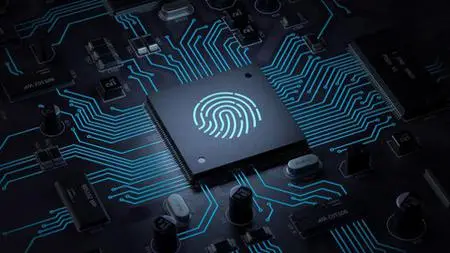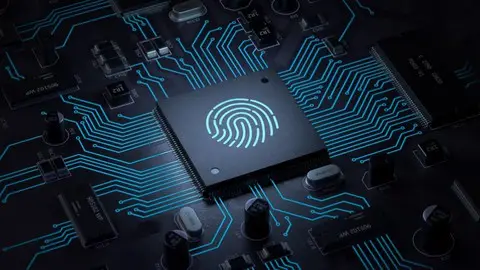IoT Application Development with the ESP32 Using the ESP-IDF
MP4 | Video: h264, 1280x720 | Audio: AAC, 44.1 KHz, 2 Ch
Genre: eLearning | Language: English + srt | Duration: 49 lectures • 7h 46m | Size: 3.6 GB
MP4 | Video: h264, 1280x720 | Audio: AAC, 44.1 KHz, 2 Ch
Genre: eLearning | Language: English + srt | Duration: 49 lectures • 7h 46m | Size: 3.6 GB
Utilize the Espressif IoT Development Framework (ESP-IDF) and FreeRTOS to create a feature rich WLAN application
What you'll learn
How to development WLAN (wireless local area network) applications on the ESP32 using the ESP-IDF
Quickly and easily setup ESP-IDF (Espressif IoT Development Framework) projects using the Eclipse IDF plugin
Develop extensible, modular applications on the ESP32 using the ESP-IDF
Develop an application with WiFi, HTTP server, web page, Non-volatile storage, OTA firmware updates, SNTP time synchronization, RGB LED, button with interrupt
Utilize FreeRTOS for task management and intertask communication
How to build, flash and monitor the application all within the IDF version of Eclipse
How to create a simple web page for displaying data, connecting the ESP32 to an access point, disconnect the ESP32, upload new firmware (OTA update) and more
You will learn how to utilize FreeRTOS primitives, such as message queues, event groups, and semaphores
Learn how to develop and extend a web page using .HTML, JavaScript and CSS and develop your HTTP server to support web page functionality
By the end of the course, you will feel confident in developing an extensible WLAN application using the ESP-IDF
Requirements
An ESP32 Development Kit
DHT22 Sensor if you want to get temperature and humidity data
RGB LED if you want to create LED status colors
Some jumper wires and a breadboard
Familiarity with the C programming language is beneficial
Description
General Description & Background Information:
In this course, we'll develop a WLAN (wireless local area network) application using the ESP-IDF (Espressif IoT Development Framework). WiFi is commonly incorporated into many IoT and Industrial IoT solutions and is the basis of the application developed in this course.
The ESP32 is a series of low-cost, low-power, SoC (system on a chip) series of microcontrollers with integrated WiFi and dual-mode Bluetooth. The ESP-IDF is Espressif's official IoT Development Framework for the ESP32. It provides a self-sufficient SDK (software development kit) for any generic application development, using programming languages such as C and C++. ESP-IDF currently powers millions of devices in the field, and enables building a variety of network-connected products, ranging from simple light bulbs and toys, to big appliances and industrial devices.
The ESP-IDF runs FreeRTOS, which is widely used in embedded systems, so the techniques and knowledge you gain while developing IDF-based applications for the ESP32 will translate well should you use other MCUs running FreeRTOS. Additionally, the FreeRTOS kernel of the ESP-IDF is modified for multicore support and we will utilize both cores of the ESP32 in this course.
If you are interested in working with the ESP32 and are serious about improving your embedded software development skills while getting to know this incredible SoC, then harnessing the capabilities of the ESP-IDF directly, is an excellent way to go.
The IDF is well designed, and once you get going, implementing new features becomes a breeze. Further, any new updates, bugfixes, or changes to the ESP-IDF can be immediately available to you in a flexible way without having to wait for the Arduino port to be written.
About the Course:
For many, the best way to learn is to start with a project, which is why in this course, I have created a WLAN application as a learning tool - as opposed to demonstrating tiny examples that you could easily find online.
The intended outcome of this course, is that you gain insight from the application code and inspiration for your own projects.
By working through this project, programming step-by-step through each lesson, I'm confident that you will feel comfortable developing an extensible WLAN application using the ESP-IDF or any application using the ESP-IDF, as it will become apparent how to create your own plan of action when using Espressif's IoT Development Framework –> utilizing the Espressif documentation, looking up the API reference and relevant functions, gaining inspiration from existing examples provided by Espressif and applying what makes sense to accomplish your goals.
Furthermore, in this course we will not focus on theory, it is a 100% practical, application programming course, where you learn by doing. However, I will briefly present background information about the ESP-IDF application programming interface that applies to each section and a brief overview of the application requirements for each section –> what will be accomplished and how we are going to accomplish it using the ESP-IDF.
Lastly, I have chosen to develop this project utilizing the ESP-IDF Eclipse Plugin (available for Windows, MacOS, and Linux), which provides an all-in-one installation that includes the Eclipse IDE, and all prerequisites required for the ESP32, enabling us to get started with programming, flashing and monitoring the ESP32 directly after the install –> this setup process is quite easy and efficient, especially for Windows users.
Hardware:
- ESP32 DevKit
- RGB LED and Resistors
- DHT22 Sensor
- Jumper Wires
- Breadboard
Software:
- ESP-IDF Eclipse
We'll use Google Chrome for testing the web page functionality
Who this course is for
Anyone interested in developing IoT applications on the ESP32
Professionals interested in getting started with writing firmware on the ESP32
Hobbyists looking to further their development skills by moving past programming the ESP32 using Arduino by using the ESP-IDF



